Unveiling the Great Stupa of Sanchi: A Timeless Journey Through History | Crazy Hodophile | 2025
The Great Stupa at Sanchi stands as a monumental edifice of brick and stone, adorned with exquisite carvings that reveal stories of ancient Mauryan history and Buddhist heritage. This breathtaking monument, with its dome rising gracefully against the sky, is a proud UNESCO World Heritage Site and one of India’s oldest and most iconic Buddhist structures. Located in the heart of Madhya Pradesh, Sanchi invites you to uncover the wonders held within this extraordinary place. Join us as we delve into its rich history and spiritual significance!
Table of Contents
Overview
The Great Stupa at Sanchi, often referred to as Stupa No. 1, is a remarkable symbol of Buddhist spirituality and history. Built under the patronage of Emperor Ashoka in the 3rd century BCE, this architectural wonder represents the core teachings of Buddhism. Its grand hemispherical dome enshrines the sacred relics of the Buddha, making it a revered site for meditation and devotion.
Origins and Evolution
The origins of the Great Stupa are rooted in the transformative reign of Emperor Ashoka, a key figure in the dissemination of Buddhism throughout ancient India. Following the devastating Kalinga War, Ashoka’s profound remorse led him to embrace Buddhism and commit to spreading its teachings of peace and compassion. As part of this mission, he initiated the construction of several stupas across his vast empire to preserve the sacred relics of the Buddha, with the Great Stupa at Sanchi standing as one of the most significant.
The Great Stupa at Sanchi is believed to be one of the earliest and most important of these structures. Initially, it was a simple hemispherical brick structure built over the relics of the Buddha. However, over the centuries, it underwent several expansions and embellishments, particularly during the Shunga and Satavahana periods. These additions included the construction of the iconic gateways (toranas), the harmika (a square railing at the top), and the chhatravali (a series of umbrellas symbolizing the Buddha’s enlightenment).
Architecture
The Great Stupa is more than an architectural masterpiece; it embodies layers of profound symbolism rooted in Buddhist philosophy. Each aspect of its design reflects deeper spiritual meanings, harmoniously blending form and function to inspire devotion and contemplation.
- The Dome (Anda): This hemispherical structure represents the cosmos, embodying the vastness and universality of Buddha’s teachings.
- The Harmika: A square enclosure atop the dome signifies the dwelling place of celestial beings, linking the earthly and divine realms.
- The Chhatravali: The series of tiered umbrellas adorning the harmika symbolizes enlightenment and the different stages of consciousness attained through spiritual growth.
- The Medhi: This circular terrace surrounds the base, offering a path for devotees to perform circumambulation (pradakshina), a meditative ritual expressing reverence.
- The Toranas (Gateways): The Great Stupa is adorned with four magnificent gateways, known as Toranas, positioned at the cardinal directions. These intricately carved masterpieces serve as pictorial narratives, depicting scenes from Buddha’s life and teachings.
- Ashokan Lion Capital pillar: Positioned near the southern side, this emblematic pillar reflects Emperor Ashoka’s profound influence on spreading Buddhism.
- Pedestal: Measuring 120 feet in diameter and 54 feet in height, the pedestal provides a robust foundation, symbolizing stability and permanence in the spiritual journey.
UNESCO World Heritage Site Designation
In 1989, the Sanchi Stupa complex was declared a UNESCO World Heritage Site. The designation recognizes its universal cultural and historical significance, ensuring its conservation for future generations.
Gallery
Things to Visit Inside the Complex
- The Great Stupa (Stupa No. 1): Of course, the main attraction! Walk around it and admire the carvings on the toranas, which depict scenes from the Buddha’s life and Jataka tales.
- Stupa No. 2: This stupa is renowned for its incredibly well-preserved ground balustrade.
- Stupa No. 3: This stupa is unique because it houses relics of two of the Buddha’s most important disciples, Sariputra and Mahamoggallana.
- Toranas: These 4 elaborately carved gateways (Northern, Southern, Eastern & Western) are stunning examples of Buddhist art and symbolism. Be sure to examine each one closely.
- The Ashoka Pillar: A tall pillar with a lion on top, built by King Ashoka. It’s one of the earliest examples of Buddhist architecture.
- Sunga Pillar: Another significant pillar, likely from the Sunga period, with intricate carvings.
- Gupta Temple: A later addition to the complex, showcasing the architectural style of the Gupta period.
- Monasteries: Explore the remains of ancient Buddhist monasteries where monks lived and studied.
- Sanchi Light and Sound Show: Enhance your experience with this captivating show! Using 3D projection mapping, lasers, and amplified sound, the show brings the history of Sanchi to life. It’s a great way to learn more about Buddhism and the significance of this ancient site.
- Sanchi Archaeological Museum: It is not inside the complex but can be visited just a short distance away. It houses a collection of artifacts found at the site, providing further context to your visit.
Interesting Facts
- The original stupa was constructed using bricks and was later encased in stone during the Shunga period, giving it its enduring structure.
- Some scholars propose that Pushyamitra Shunga, a king of the Shunga dynasty, damaged the original structure in the 2nd century BC. However, his son, Agnimitra, is credited with rebuilding it using stone slabs. The Stupa continued to evolve under the Shunga dynasty’s rule, undergoing expansions and additions that reflect the architectural advancements of that era.
- Inside the stupa, some chambers were used to store relics of the Buddha.
- The Great Stupa was lost and forgotten for centuries, hidden in the jungle! It was rediscovered in 1818 by British General Henry Taylor.
- The four lions on top of the Ashoka Pillar at Sanchi inspired India’s national emblem!
Visiting Information
Opening and Closing Hours
The Great Stupa welcomes visitors every day of the year, from sunrise to sunset (6:30 AM to 6:30 PM).
Ticket Price
Unlocking History is Affordable!
- Indian Citizens: ₹35 (Online), ₹40 (Offline)
- SAARC and BIMSTEC nations: ₹35 (Online), ₹40 (Offline)
- Foreign Nationals: ₹550 (Online), ₹600 (Offline)
- Kids Explore Free: Children up to 15 years old enter the Stupa free of charge!
- Sanchi Archaeological Museum: ₹5
- Sanchi Light and Sound Show: ₹100 for Indian Citizens; ₹300 for Foreign Nationals
Important Note: Ticket prices are subject to change, so it’s always a good idea to double-check before your visit. You can conveniently book tickets for the Sanchi Stupa and Museum through the official Archaeological Survey of India website.
Booking Link: Archaeological Survey of India (ASI)
As the sun sets, Sanchi’s story unfolds in a captivating light and sound show. This unforgettable experience illuminates the Stupa and brings its history to life. Don’t miss it!
Best Time to Visit
To fully immerse yourself in the wonders of this ancient site, plan your trip between October and March. These months offer the most pleasant weather for exploring the open complex. Enjoy comfortable temperatures and avoid the summer heat and monsoon rains for a truly immersive experience.
Tips for Your Visit
- Learn and Discover: Enhance your experience by hiring a knowledgeable guide who can share fascinating insights into the Great Stupa’s history, symbolism, and cultural importance.
- Take Your Time: Sanchi offers a wealth of attractions, including multiple stupas, intricate carvings, and serene surroundings. Plan to spend at least half a day exploring the complex to fully appreciate its wonders.
- Must-See Highlights: Don’t miss the Sanchi Archaeological Museum at the foothills, showcasing artifacts that complement the site’s rich history. Stay for the captivating Light and Sound Show (7 PM in Hindi, 7:50 PM in English), which beautifully narrates Sanchi’s story.
- Stay Hydrated and Comfortable: Wear comfortable shoes for walking, bring water, and carry a hat or umbrella if visiting during hot weather.
- Respect the Sacred Space: Remember that Sanchi is a religious site. Please dress modestly and behave respectfully.
- Photography Tip: Avoid using flash when photographing carvings and relics to help preserve them.
How to Reach
Reaching Sanchi is convenient, with multiple transportation options to suit every traveler:
By Air
The closest airport to Sanchi is Raja Bhoj Airport in Bhopal, situated about 58 km away. You can reach Sanchi conveniently from the airport by hiring a taxi or taking a bus. With good connectivity to major cities across India, Bhopal Airport offers an easy and comfortable travel experience.
By Train
- Sanchi Railway Station: Just 1.5 km from the Great Stupa, this small station offers a direct connection for those traveling locally.
- Vidisha Railway Station: Situated around 10 km away, Vidisha is a more prominent station categorized as ‘A’ by Indian Railways. It’s well-connected to major cities, making it an ideal choice for travelers from across India. From Vidisha, you can hire a taxi or take an auto-rickshaw to Sanchi.
By Road
Sanchi is conveniently located on National Highway 146, providing seamless road connectivity to major cities in Madhya Pradesh. You can hire a taxi or drive your vehicle for a comfortable journey.
By Bus
The nearest bus stand is Vidisha Bus Stand, approximately 10 km from Sanchi. Catch a bus to the Vidisha Bus Stand. From Vidisha, it’s a quick taxi or auto-rickshaw ride to Sanchi.
Location Map for Sanchi Stupa
Nearby Attractions to Visit After Sanchi Stupa
Exploring the area around Sanchi Stupa reveals a wealth of cultural, historical, and natural treasures. Here are some must-visit attractions:
- Udayagiri Caves (Approx. 10 km): A group of 20 rock-cut caves dating back to the 5th century CE, Udayagiri Caves are an exceptional example of Gupta-era architecture and artistry. These caves are dedicated to Hindu gods and feature intricate carvings, including the famous Varaha (boar) avatar of Vishnu.
- Harsiddhi Mata Mandir (Approx. 27 km): Venture beyond Sanchi to discover the Harsiddhi Mata Mandir, nestled near Parweria Village. This temple honors Goddess Harsiddhi, a revered figure in Hinduism, and offers a glimpse into the rich spiritual traditions of the region.
- Raisen Fort (Approx. 33 km): This massive hilltop fort is a testimony to Madhya Pradesh’s medieval history. The fort is surrounded by 13 gates and houses several palaces, mosques, temples, and a water reservoir.
- Bhopal City (Approx. 50 km): Madhya Pradesh’s capital seamlessly blends history, culture, and modernity. Renowned as the “City of Lakes,” Bhopal is celebrated for its picturesque water bodies, historical landmarks, and bustling markets.
- Bhojpur Temple (Approx. 76 km): Known as the “Somnath of the East,” this 11th-century temple is dedicated to Lord Shiva and houses one of the largest unfinished Shiva Lingas in India, carved from a single rock.
Conclusion
Stepping into the Great Stupa at Sanchi is like stepping back in time. The peaceful atmosphere and the weight of history create an unforgettable experience. A journey to this UNESCO World Heritage Site offers an unparalleled glimpse into the evolution of Buddhist art and philosophy.
Related External References:

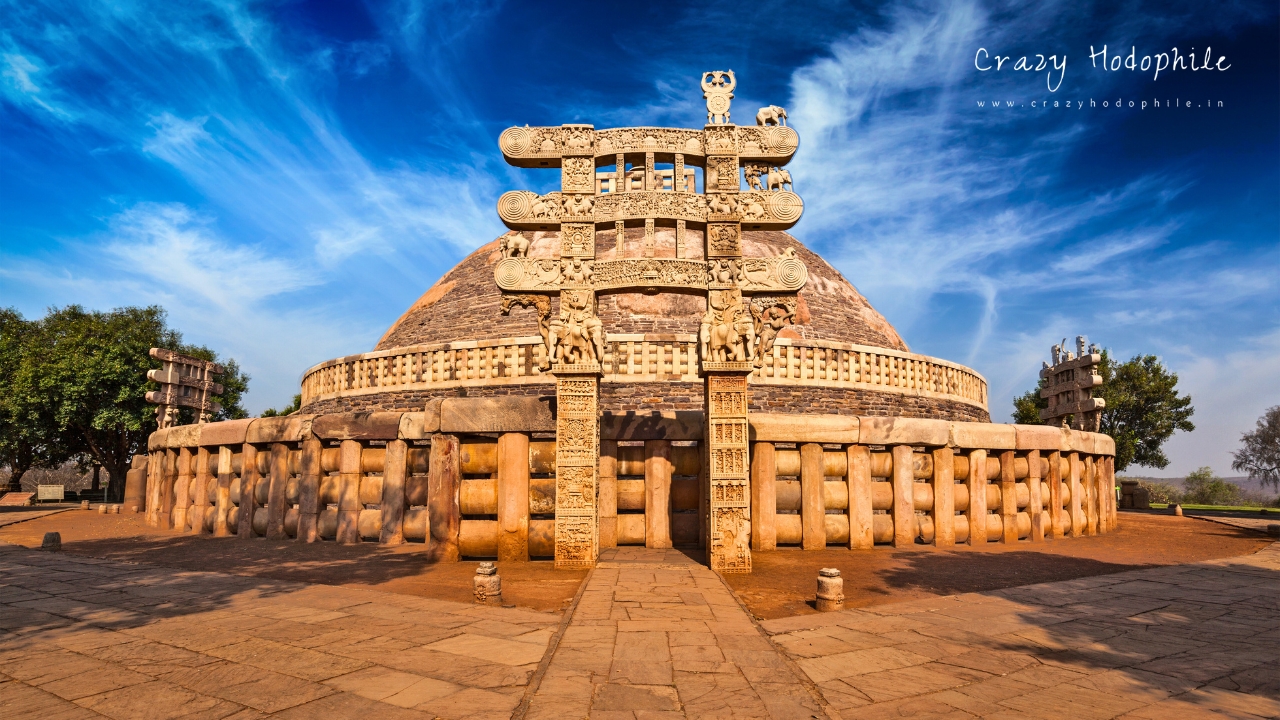

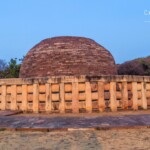


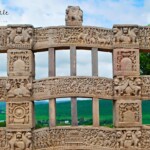



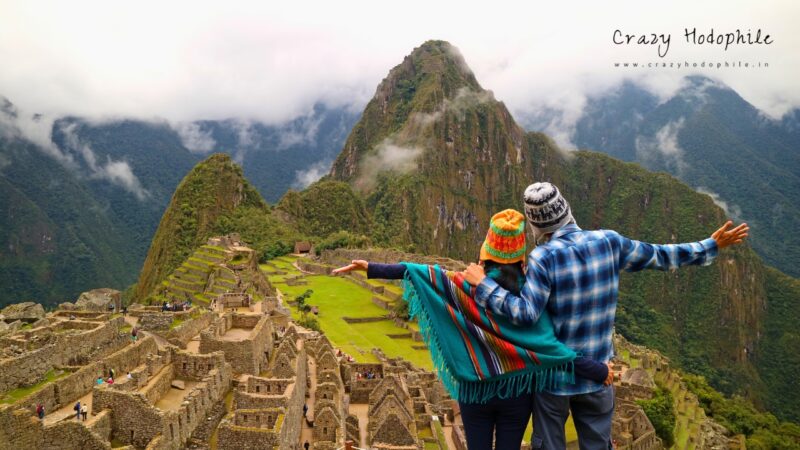
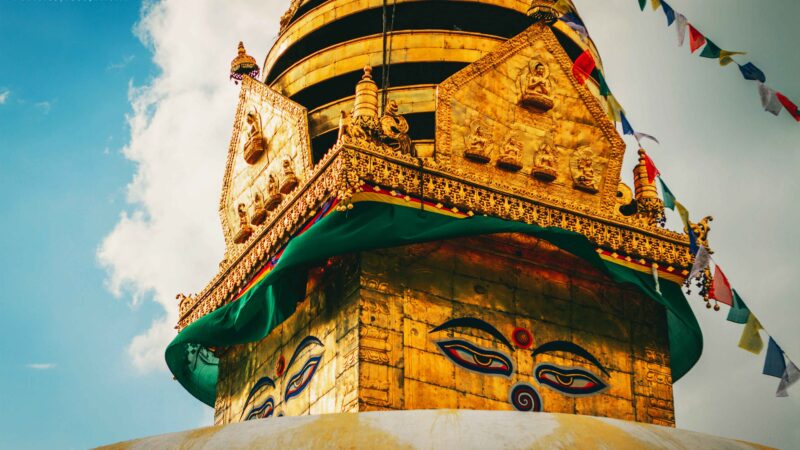
Great job bro
Thanks for the appreciation bhaisahab!